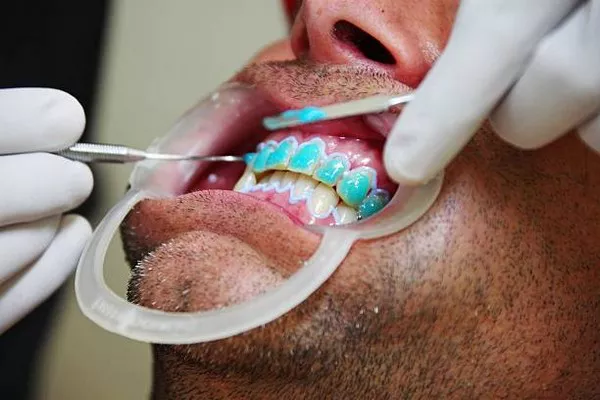When it comes to dental procedures, time is often a concern for patients. Whether it’s due to scheduling constraints or anxiety about being in the dentist’s chair, knowing how long a procedure will take can provide a sense of reassurance. In the case of getting two fillings, the duration can vary depending on several factors. In this article, we’ll delve into the procedure duration, filling materials, preparation, recovery, aftercare instructions, follow-up appointments, insurance coverage, and child-specific considerations related to getting two fillings.
Procedure Duration
The time it takes to get two fillings can vary depending on factors such as the complexity of the cavities and the dentist’s approach. Generally, a single filling typically takes about an hour or less. However, when multiple fillings are involved, the procedure may take longer.
Dentists will assess the extent of decay in each tooth and plan the treatment accordingly. This may involve removing decayed tooth structure, preparing the tooth for the filling material, and then placing and shaping the filling. Each step requires precision and attention to detail, which can influence the overall duration of the procedure.
Filling Materials
Several filling materials are available, each with its own advantages and considerations. Common options include:
- Composite Resin: This tooth-colored material is popular for its aesthetic appeal. It’s often used for fillings in visible areas of the mouth. Composite resin fillings require careful layering and curing with a special light, which can extend the procedure time compared to other materials.
- Amalgam: Made from a mixture of metals including silver, mercury, tin, and copper, amalgam fillings have been used for decades due to their durability and affordability. The placement process for amalgam fillings may be quicker compared to composite resin, as they require less meticulous layering and curing.
- Gold: Gold fillings are highly durable and resistant to wear, making them a long-lasting option. However, the process of creating and placing gold fillings typically requires multiple appointments and may take longer overall.
- Porcelain: Porcelain fillings, also known as inlays or onlays, are custom-made restorations created in a dental laboratory. While the placement process may take longer due to the need for impressions and customization, porcelain fillings offer excellent aesthetics and durability.
The choice of filling material will depend on factors such as the location of the cavity, aesthetic preferences, and budget considerations. Your dentist will discuss the options with you and recommend the most suitable material for your specific needs.
Preparation and Recovery
Before the procedure, your dentist will administer local anesthesia to numb the area and ensure your comfort during the treatment. The time it takes for the anesthesia to take effect can vary from person to person, but you may experience a slight tingling sensation or numbness shortly after the injection.
Once the area is numb, the dentist will begin preparing the teeth for the fillings. This involves removing any decayed or damaged tooth structure and cleaning the cavity thoroughly to ensure proper adhesion of the filling material. The preparation process may take longer if the cavities are deep or extensive.
After the fillings are placed, your dentist will check your bite to ensure proper alignment and make any necessary adjustments. Depending on the type of filling material used, there may be a waiting period for the material to fully set or harden before you can resume normal eating and drinking.
During the recovery period, it’s normal to experience some sensitivity or discomfort around the treated teeth. Your dentist may recommend over-the-counter pain relievers to manage any discomfort. It’s important to follow any post-procedure instructions provided by your dentist to promote healing and prevent complications.
Aftercare Instructions
After getting two fillings, it’s important to follow proper aftercare instructions to ensure the longevity of your restorations and maintain good oral health. Here are some general guidelines to follow:
- Avoid Sticky or Hard Foods: To prevent damage to the fillings, avoid chewing on hard or sticky foods immediately after the procedure. Stick to soft foods and liquids until any numbness wears off and you can comfortably chew.
- Practice Good Oral Hygiene: Continue to brush and floss regularly to remove plaque and food particles from around the fillings. Good oral hygiene habits are essential for preventing new cavities and maintaining the integrity of the fillings.
- Attend Follow-Up Appointments: Be sure to schedule and attend any follow-up appointments recommended by your dentist. These appointments allow your dentist to check the integrity of the fillings and monitor your overall dental health.
- Report Any Concerns: If you experience persistent pain, sensitivity, or other symptoms after getting fillings, don’t hesitate to contact your dentist. These could be signs of complications that require prompt attention.
By following these aftercare instructions and maintaining regular dental check-ups, you can help ensure the success of your fillings and enjoy a healthy, beautiful smile for years to come.
Follow-Up
Follow-up appointments are an essential part of the dental filling process. These appointments allow your dentist to assess the integrity of the fillings, monitor your oral health, and address any concerns you may have. During follow-up visits, your dentist may take X-rays to check for any signs of new decay or other issues that may require attention.
It’s important to attend all scheduled follow-up appointments and communicate openly with your dentist about any changes or concerns you may have regarding your dental health. By staying proactive and attentive to your oral care, you can help maintain the longevity of your fillings and prevent future dental problems.
Insurance Coverage
The cost of getting two fillings can vary depending on factors such as the type of filling material used, the complexity of the cavities, and your dental insurance coverage. Many dental insurance plans cover a portion of the cost of fillings, but the extent of coverage may vary depending on your plan and provider.
Before undergoing treatment, it’s important to check with your dental insurance provider to understand your coverage and any out-of-pocket expenses you may incur. Your dentist’s office can also provide information on billing and payment options to help you navigate the financial aspect of your dental care.
Keep in mind that while cost is certainly a consideration, it’s important to prioritize your oral health and choose the filling material that best meets your needs and preferences, regardless of insurance coverage.
Child-Specific Considerations
When it comes to treating children, there are additional considerations to take into account. Children may have unique dental needs and may require a different approach to treatment compared to adults. Here are some child-specific considerations related to getting fillings:
- Nitrous Oxide Sedation: Some children may feel anxious or nervous about dental procedures. Nitrous oxide, also known as laughing gas, can help relax children and make the experience more comfortable. Your dentist may recommend nitrous oxide sedation for children who are particularly anxious or have difficulty sitting still during treatment.
- Additional Time for Anesthesia: Children may require additional time for local anesthesia to take effect compared to adults. Your dentist will take this into consideration when planning the timing of the procedure and allow extra time for the anesthesia to work before beginning treatment.
- Pediatric-Friendly Environment: Many dental offices have child-friendly amenities such as toys, books, and colorful decor to create a welcoming environment for young patients. These amenities can help children feel more at ease during their visit and make the experience more enjoyable.
- Parental Involvement: Depending on the child’s age and comfort level, parents may be allowed to accompany their child during the procedure. This can provide reassurance and support for children who may feel anxious about the treatment.
By addressing these child-specific considerations and tailoring the treatment approach to the individual needs of each child, dentists can help ensure a positive and successful experience for young patients receiving fillings.
Conclusion
Getting two fillings is a common dental procedure that can help restore the health and function of your teeth. The duration of the procedure can vary depending on factors such as the complexity of the cavities, the choice of filling material, and any additional considerations for children.
By understanding what to expect before, during, and after the procedure, you can feel more confident and prepared for your dental appointment. Remember to follow your dentist’s recommendations for aftercare and attend all scheduled follow-up appointments to maintain the longevity of your fillings and overall dental health.
If you have any questions or concerns about getting fillings, don’t hesitate to discuss them with your dentist. Your dentist can provide personalized guidance and address any issues to ensure a positive outcome for your dental treatment.
FAQs About Dental Fillings
1. Can you get two fillings at the same time?
Yes, it’s possible to get two fillings during the same dental appointment. In fact, many dentists prefer to treat multiple cavities during a single visit to minimize inconvenience for patients and reduce the need for multiple appointments. However, the feasibility of getting two fillings at the same time depends on factors such as the location and severity of the cavities, as well as the patient’s comfort level and time constraints.
2. How long after 2 fillings can you eat?
After getting fillings, it’s important to wait until the local anesthesia wears off before eating or drinking. This typically takes about 1-2 hours. Additionally, if composite resin fillings were used, it’s advisable to wait until the filling material has fully hardened, which can take up to 24 hours. Once you’re able to eat, it’s best to start with soft foods and avoid chewing directly on the filled teeth until any sensitivity or discomfort subsides.
3. How many fillings can a dentist do in an hour?
The number of fillings a dentist can do in an hour depends on various factors, including the complexity of the cavities, the type of filling material used, and the dentist’s skill and efficiency. On average, a dentist may be able to complete 1-3 fillings per hour. However, this is just a general estimate, and the actual number may vary from case to case. Your dentist will discuss the treatment plan with you and provide an estimate of the time required for your specific situation.
4. Can a filling take 10 minutes?
While it’s technically possible for a dentist to complete a filling in as little as 10 minutes, this would typically be for a very small and straightforward cavity. In most cases, the process of preparing the tooth, removing decay, and placing the filling requires more time to ensure proper adhesion and a durable restoration. Additionally, the type of filling material used may affect the duration of the procedure. Composite resin fillings, for example, require careful layering and curing with a special light, which can extend the procedure time compared to other materials.































